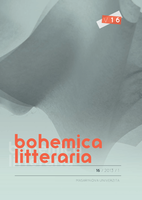Geneze a vývojové proměny české dramatizační praxe ve 20. a 21. Století pohledem konceptu tří os
Genesis and development of the Czech practice of adaptations for the theatre in the 20th and 21st centuries from a tree-axis perspective
Author(s): Aleš MerenusSubject(s): Theatre, Dance, Performing Arts, Recent History (1900 till today), Theory of Literature, History of Art
Published by: Masarykova univerzita nakladatelství
Keywords: Dramatization; literary genres; inter-war avant-garde theatre; studio theatres in the 1970s and 1980s; Czech theatre after 1989;
Summary/Abstract: The study focuses on the theory and history of dramatization of literary works. It offers the possible typology of dramatizations and presents a multi-layered model that should serve the classification of dramatized works. Dramatized works are divided according to three axes: a structural-functional one, a “truthfulness” to the original one, and the axis of pragmatic conditions – i.e. the context of the dramatized work. The author identifies two factors closely connected to changes in the theatrical art that caused the formation and expansion of the dramatization phenomenon at the end of the 19th century and primarily, during the 20th century. The first is the shift of the dramatic structure from the “objective” drama towards its more subjective and epic forms that lead to a confluence of the epic and drama. The second cause that enabled an increase of the number of dramatized works (textual and staged) is related to an emancipation of the dramatic art that no longer needed to limit itself to merely illustrating or interpreting of drama, but began to adapt texts from other literary genres. These two causes lead to a massive expansion of a dramatizing practice, the importance of which found its primary expression in the Czech contexts from the 1920s to the present.
Journal: Bohemica litteraria
- Issue Year: 16/2013
- Issue No: 1
- Page Range: 113-133
- Page Count: 21
- Language: Czech

